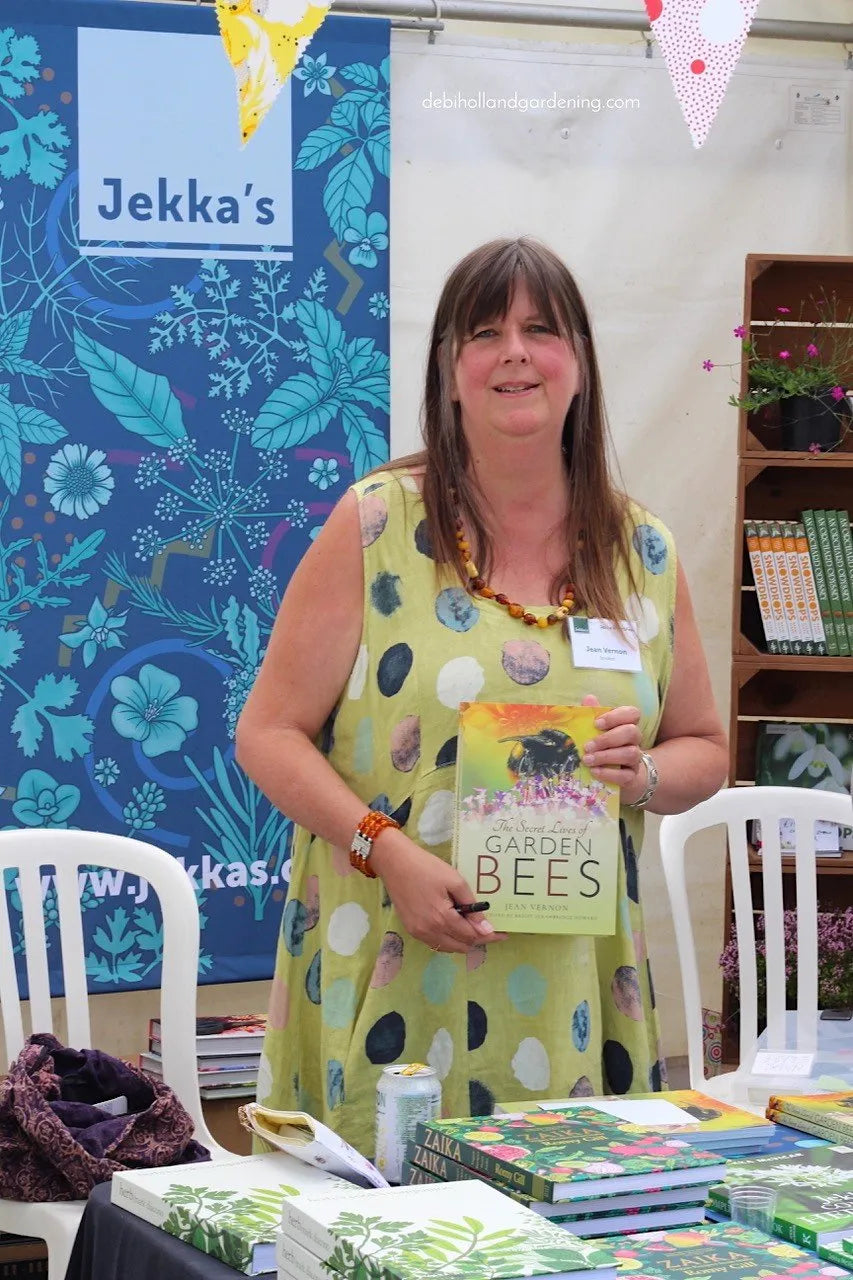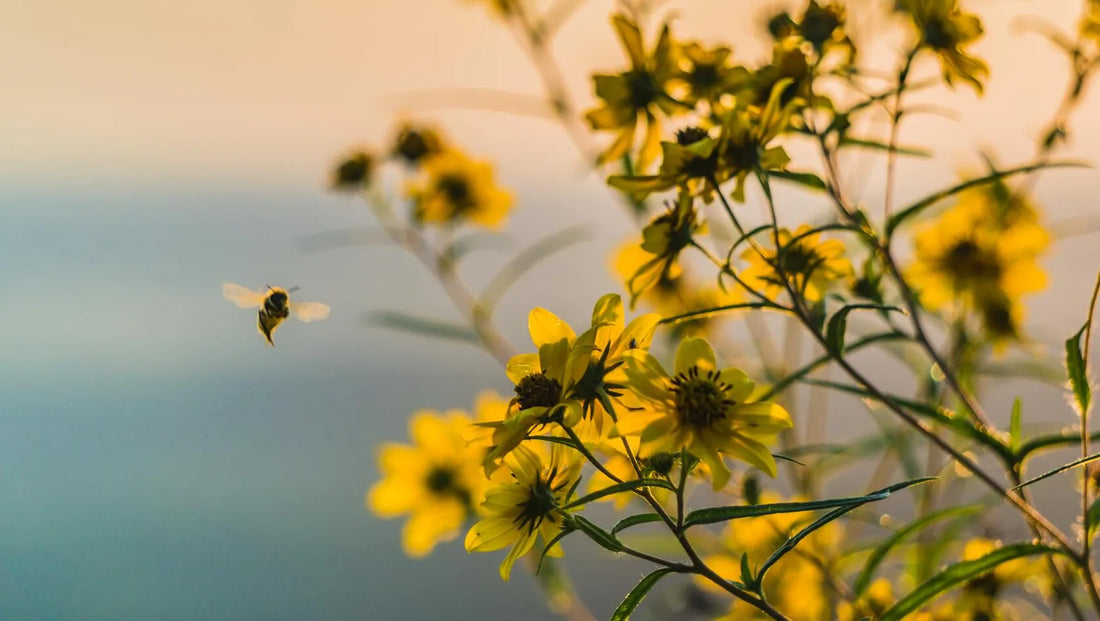Autumn is nature's planting season. If you've ever wondered why it's because the soil is still warm from the summer sun and the autumn rains have moistened the ground. Warm, wet soil helps plant roots establish before the colder months of winter. That means it's the perfect time to plant for bees and other pollinators.
In this guest blog by garden writer and bee enthusiast Jean Vernon, she helps you plan and plant for pollinators and shares a few things to consider before you start brandishing your planting trowel:
1) Bee-ware
As autumn sets in, many creatures have hunkered down and may be nestling in the undergrowth, in shallow bunkers, in mossy caves or simply in the soil. Our new bumblebee queens that emerged and mated in the summer will be snuggled down in sheltered spots around the garden. Often they choose a north-facing bank where the winter sun won't wake them from their slumber too early. But you could find them as you dig out planting holes for bulbs and plants anywhere in the garden. Many of the solitary bees are mining bees and their nests and tunnels containing precious pupating bees could be in the lawn, in the flowerbeds or on sandy banks of soil. Other overwintering pollinators like moth and caterpillar chrysalises, solitary wasps and even beetles could also be disturbed. Keep a look out as you garden and gently replace anything you find. To be absolutely certain you could plant any new plants into pots and containers using fresh organic, peat free compost.
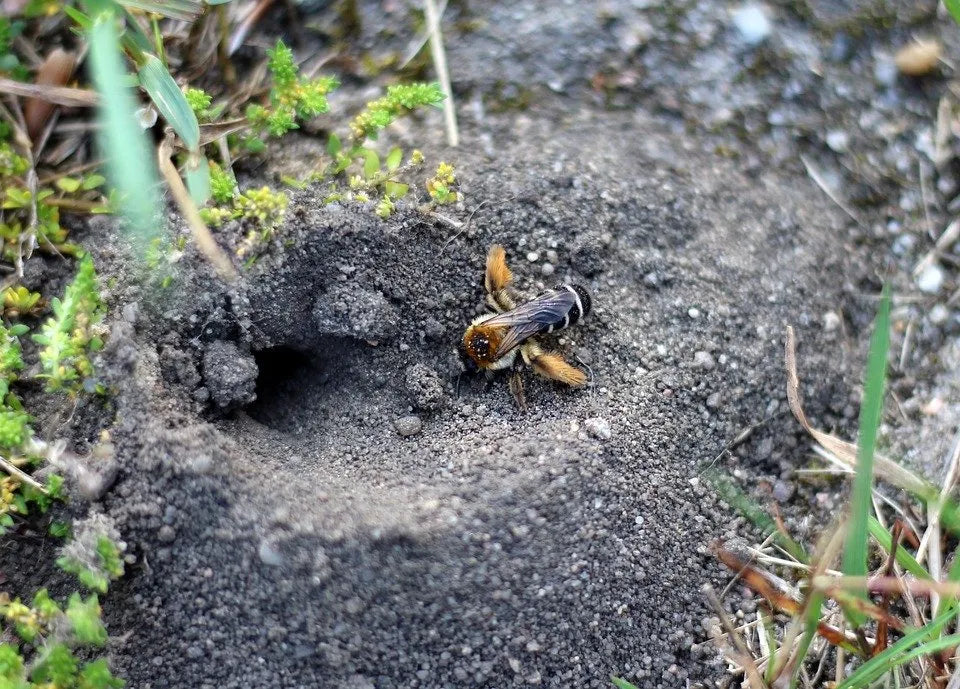 About sixty species of mining bees nest in the soil.
About sixty species of mining bees nest in the soil.
2) Autumnal flowers
Look around while out in the autumn garden and listen. While many of our pollinating friends are already overwintering, on a sunny day you may well spot a few late foragers. The carder bumblebees are still about and looking for nectar. Butterflies, moths, flies and hoverflies are feeding on seasonal flowers and of course you will also see honeybees feeding when the temperature allows. These autumn foragers need open flowers rich in nectar to sustain them. Growing later flowering plants that span the summer into autumn phase can be a great help, but remember that pollinators have different needs, mostly relating to their tongue length. Flowers that suit one species may not be accessible for another so choose to grow different shaped flowers. Good plants with late summer and autumnal flowers include echinacea, rudbeckia, asters, persicaria, some buddleias, sage, mint and marjoram. One of the most important autumn food plant for pollinators is the wild ivy. Let it grow and let it flower, even its berries are food for the birds.
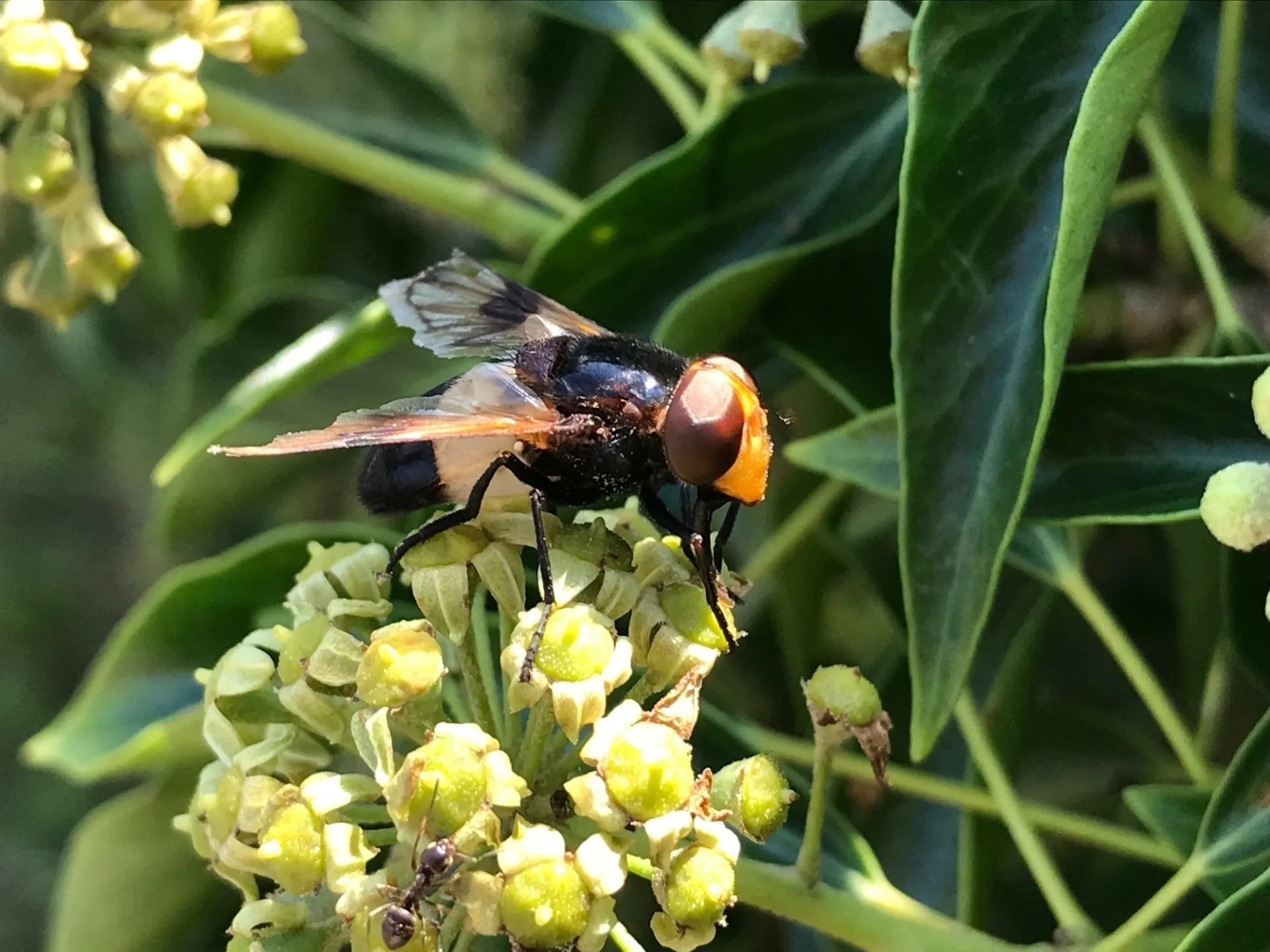 Wild ivy is a really important plant for pollinators like this hoverfly (Volucella pellucens)
Wild ivy is a really important plant for pollinators like this hoverfly (Volucella pellucens)
3) Planning and planting
The ideal pollinator garden will have plants in flower all year round, even through the winter. That can be a tall order but you can achieve it with a little planning. For example you can grow crocus to flower in early spring, but a pot of crocus bulbs placed in a greenhouse or a shed will flower a week or more earlier than those in the garden. It's called forcing, and is a way of manipulating spring bulbs to flower earlier. Choose purple crocus over yellow, as they seem to be more attractive to early emerging queen bumblebees. Other good bulbs for early flowers include snowdrops; choose the single flowered types where the nectar and pollen is accessible, and grape hyacinths and early species tulips. The great thing about bulbs is that they are pretty much guaranteed to flower and should bulk up over the years and flower every spring. Where possible buy organic flower bulbs that have not been pre-treated with pesticides.
Perennials
Perennials are a great investment for your pollinating friends, because they establish into larger clumps, live for years on end and often flower for weeks at a time. Extending the flowering season at both ends is important for all pollinators. Choose early flowering perennials like hellebores, lungwort and comfrey, add some other great plants like lamb's ears, and one of my favourites perennial borage (Trachystemon orientalis) that can bridge the gap between winter and spring and is great for emerging queen bumblebees. And don't forget the larval food plants for butterfly and moths.
Budget plants
If your budget is tight then grow from seed, it's a great way to fill your garden with colour and interest as well as essential food for pollinators. Easy annuals to grow include cosmos, borage, nasturtiums, poppies, Verbena bonariensis and sunflowers. Don't forget the Biennials that flower in their second year like foxgloves, echium vulgare and teasels. But there are also many vegetables that you can grow easily that will feed the pollinators and provide you with a harvest too, such as beans and peas.
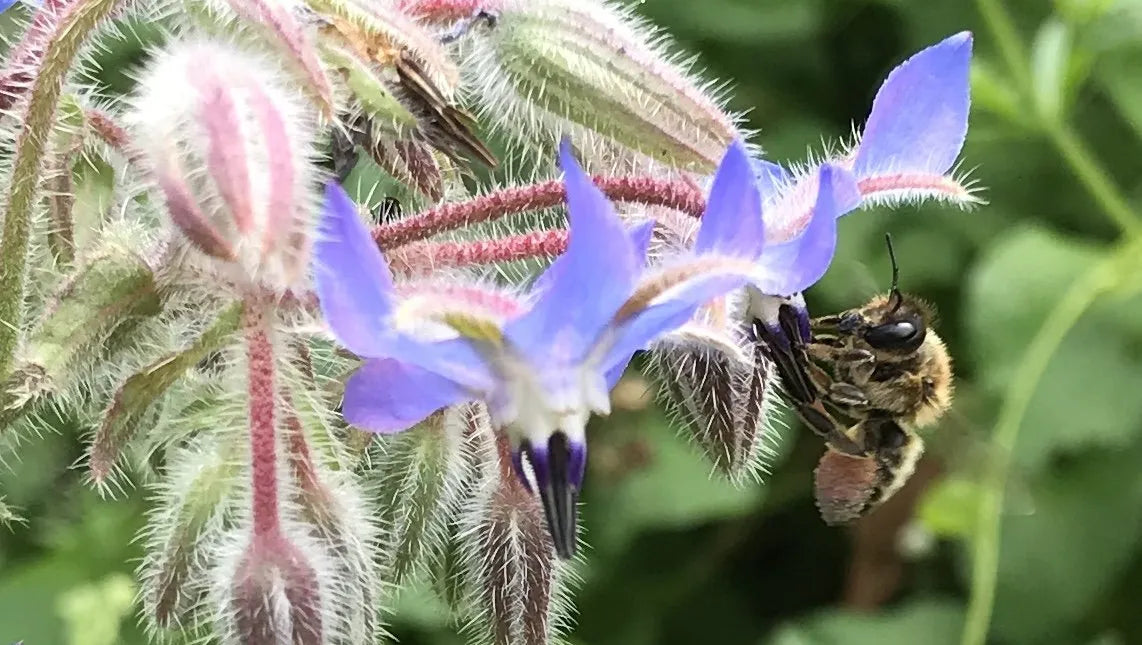 Nectar rich annuals like borage are very easy from seed and popular with bees like this leaf-cutter female.
Nectar rich annuals like borage are very easy from seed and popular with bees like this leaf-cutter female.
Trees and shrubs
Larger plants such as trees and shrubs have many flowers in one place and are a very efficient way for pollinators to feed. Pollen rich plants in early spring are especially important and trees can fill that gap. Take care what you choose in a small garden. If you've got more space choose willow, hazel and alder for pollen and cherry plum (Prunus cerasifera), crab apples and other fruit for nectar. In smaller gardens choose shrubs and plant flowering currant (ribes), hebes, lavender and rosemary, these pretty shrubs are great garden plants and good for pollinators.
Jean Vernon is an award-winning garden writer. She writes about wildlife for the RHS Journal - The Garden. She is a contributor to the gardening section of The Daily Telegraph and has written many articles on bees, pollinators and the needs of garden bees. Fascinated by bees and the environment since a youngster, she is a tree and bee guardian and passionate about championing bees and pollinators and wildlife of all sorts. It is her mission to unravel, demystify and explain the intricate balance of nature in your garden and to introduce you to the familiar and unfamiliar bees and pollinators that live, breed and breathe within the garden habitat.
Jean aims to unravel, demystify and explain the intricate balance of nature in your garden and to introduce you to the familiar and unfamiliar bees and pollinators that live, breed and breathe within the garden habitat.
We highly recommend her book and have enjoyed every chapter, learning even more about the fascinating world of bees!
Signed copies of her first book The Secret Lives of Garden Bees are available from her website www.addictedtobees.com
Text c. Jean Vernon
Potrait image c. Debi Holland Gardening
